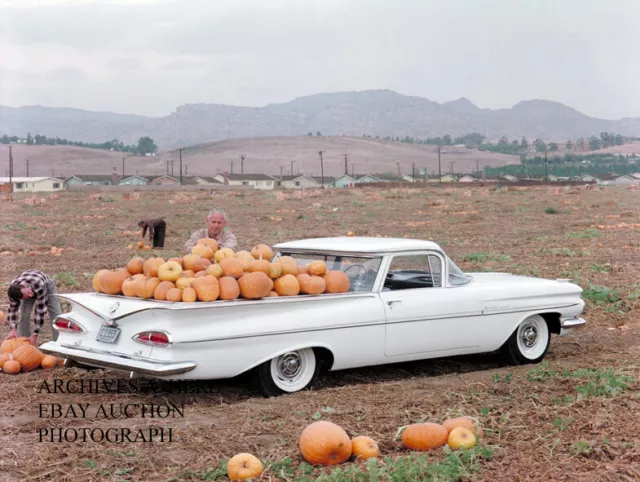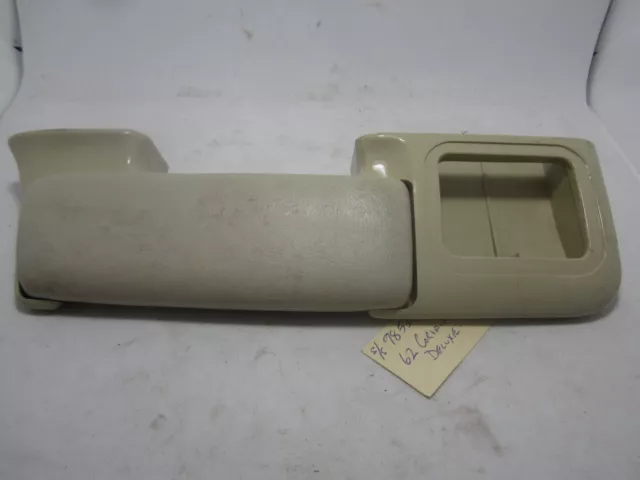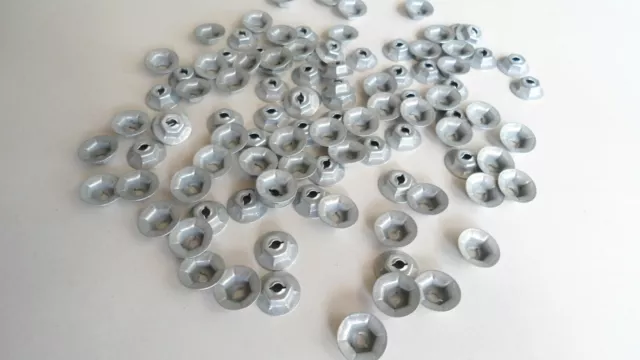Chevrolet Corvair Deluxe 700 Club Couple Chevy factory press photo photograph
A superb and rare photo of the Chevrolet Corvair Deluxe 700 Club Coupe .
The Chevrolet Corvair was produced by the Chevrolet division of General Motors from 1959 to 1969, for the 1960–1969 model years. The Corvair was offered in a wide range of body styles, including four-door sedans, two-door coupes, convertibles, and station wagons. It was also built as a compact van similar to the Volkswagen bus, with styles including a pickup, panel van, and a passenger van called the Greenbrier. The cargo floor was raised above the rear engine, and some pickups featured an unusual side-loading ramp. The Corvair — like the Ford Falcon, Studebaker Lark, Nash Rambler, and the Plymouth Valiant— was one of the first of a new compact class. These were offered in response to the small, sporty and fuel-efficient automobiles being imported from Europe by Volkswagen, Renault, and others. The Corvair stood out with engineering significantly different from other American offerings. The Corvair was part of GM's innovative Y-body ("Z"-Body from 1965-on) line of cars, but this was by far the most unusual, due to the location and design of its engine. It was an air-cooled flat / opposed rear-engined vehicle inspired by the Volkswagen Beetle and the Porsche 356. The 1948 Tucker Torpedo had also used this layout to mixed reviews. Most other compacts such as the Chevy II / Nova, and later, the subcompact Vega, were smaller versions of conventional automobiles with in-line water-cooled front-mounted iron 4 or 6 cylinder engines. In contrast, the Corvair's powerplant was an aluminum, air-cooled 140 in³ (2.3 L) flat-6 engine. The first Chevrolet Corvair engine produced as little as 80 hp (60 kW). Later versions developed as much as 180 hp (134 kW), comparable to V6 engines of the 1980s. Although the Corvair was initially marketed as an economy sedan, with the development of a coupe, it was offered as a sporty sedan before the Mustang became popular in the compact segment. Its final design evoked the later Camaro. The Corvair name originated as a fastback show car in 1954, which, like many Chevrolet concept cars of the period, including the Chevrolet Nomad and Chevrolet Impala, was based on the Corvette. The design was championed by Ed Cole, Chevrolet's chief engineer in the early 1950s and general manager in the late 1950s, as an answer to the growing popularity of small, lightweight imported cars. Design began in 1956 under the auspices of Ed Cole; the first vehicles rolled off the assembly line in late 1959 as part of the 1960 model year. For 24 hours, two Corvairs were tested at the Riverside International Raceway in Riverside, California. One car rolled over, but the other completed the drive, only losing a quart (0.95 L) of oil. The Corvair was introduced to the public early in 1960, as actress Shirley Bonne unveiled the first model. The Corvair represented a breakthrough in unibody construction for mass-produced Detroit vehicles, the most successful automobile of this type up to that time, with 1,786,243 cars being produced between 1960 and 1969. The Corvair was built from uniform molds and relied on the shaping of the glass and doors for help with structural integrity. Convertible versions needed special supports welded underneath to compensate for the missing shape on the top. The Corvair enjoyed a ten model year run, and was finally discontinued in May 1969 due to plummeting sales. A variety of factors contributed to the model's 96-percent drop in sales from 1965 to the last 1969 models. The Corvair faced increasing competition from the Ford Mustang and other "pony cars" — ironically, a market pioneered by the 1960 Corvair Monza. Safety issues were raised, especially by Ralph Nader's 1965 book Unsafe at Any Speed. The car was costly to produce and did not command a premium price on the showroom floor. Engineers experienced difficulties adapting the basic engine design to the tighter emissions standards proposed for 1972. A lack of interest at General Motors, including an almost complete lack of advertising from 1967 onwards (the company's "by-request-only" 1969 Corvair brochure was a mere four pages long, and the 500 Sport Coupe wasn't even illustrated) contributed to the model's demise. The Corvair was a successful model for Chevrolet, with annual unit sales exceeding 200,000 for many years. Chevrolet deliberately designed the Corvair as a radical departure from the conventional Chevrolet. The rear engine offered enormous packaging and economy advantages, providing the car with a lower silhouette, flattening passenger compartment floor, obviating the need for power assists, reducing the need for air conditioning (due to the absence of engine heat blowing over the passenger compartment), and offering dramatic improvements in ride comfort, traction, and braking balance. The radically different design also attracted customers from other makes, primarily imports. This was an important, and often under-emphasized, cause of the Corvair's success. Unlike the Falcon and Valiant nameplates, whose conventional designs tended to poach customers from the cheaper but profit-driving full-size models from their respective manufacturers, the Corvair siphoned customers from makes such as Volvo or VW. Because such customers had not been likely to contemplate a larger Chevrolet Biscayne (which cost only slightly more), each Corvair sold did not translate into a Biscayne that was lost. This was in direct contrast to the situation at Ford, where the Falcon stole sales from the basic large Ford sedan. Corvair sales were almost entirely "extra business" for Chevrolet. The early four door 1960 models, the 500 and the 700, were conceived as economy cars offering few amenities in order to keep sticker prices down for Chevrolet customers. Powered by an 80 hp (60 kW) engine and unsynchronized three speed manual or two speed Powerglide automatic transmission, the Corvair was less powerful than other cars in its class; however, the horsepower and torque fit the size of the car rather well. Despite the relatively expensive and unique power train, the car sold for around $1,500 for a base model 500. Introduced in January 1960, two-door models boasted a fold-down rear seat for added storage capacity, which was greatly needed as the spare tire was stowed in the forward trunk compartment. The passenger compartment was heated by a gasoline heater mounted next to the spare tire in the luggage compartment. While it offered immediate hot air, customers complained of what they thought might be decreased gas milage on cold days and through long winters. Chevrolet redesigned the heating system for the 1961 model year, yet left it up to customers to choose the gas heater until the end of the 1964 model year. The line quickly grew from utilitarian bench seat sedans and coupes to the more plushly appointed bucket seat interiors of the 900 line now called Monza. It hit showroom floors in the Spring 1960. Two available options on Monza were a more powerful engine, rated at 95 hp (71 kW) thanks to a more radical camshaft paired with low-restriction exhaust, and the introduction of a fully synchronized four speed transmission. Despite its late introduction, the Monza sold 12,000 units, making it one of the most popular Corvairs. 1961 Chevrolet added an optional four-speed manual transmission (late in 1960, few produced prior to 1961 introduction) to augment the standard three-speed manual and optional two-speed Powerglide automatic. The Corvair engine received its first size increase to 145 in³ courtesy of a slight increase in bore size. The base engine was still rated at 80 hp (60 kW) when paired with the manual transmissions and 84 hp (63 kW) when mated to the optional automatic transmission in Monza models. The high-performance engine was rated at 98 hp (73 kW). To increase luggage capacity in the front the spare tire was relocated to the engine compartment in cars not ordered with All Weather air conditioning and the gasoline heater was replaced by a system of ducts that redirected warmed air from the cylinder heads to the passenger compartment. The gasoline heater remained available as an option through 1964. Corvair was the first of the compacts to offer factory air conditioning, as a mid 1961 option introduction. The large condenser lay flat atop the horizontal engine fan. A large, green painted reverse rotation version of the standard GM Frigidaire air conditioning compressor was used, and an evaporator housing was added under the dash with integrated outlets surrounding the radio housing. All Weather Air Conditioning was not available on wagons, Greenbrier/Corvair 95, or the turbocharged models introduced later due to space conflicts in those body styles.
This is a very nice and very rare non period photo that reflects a wonderful era of Chevrolet history in a wonderful way. This is your rare chance to own this photo, therefore it is printed in a nice large format of ca. 8" x 10" (ca. 20 x 26 cm). It makes it perfectly suitable for framing.
Shipping costs will only be $ 7.00 regardless of how many photos you buy. For 5 or more photos, shipping is free!
(Note: A. Herl, Inc. does not appear on photo, for ebay purposes only)
No copyright expressed or implied. Sold as collectable item only. We are clearing out our archives that we have gathered from various sources.
All items always sent well protected in PVC clear files and board backed envelopes.
We have photographs that came from professional collections and/or were bought from the original photographer or press studio! They are all of professional and excellent quality.
After many decades of professionally collecting photographs and posters we are clearing out our archives. They make the perfect gift and are perfectly suited for framing. They will look gorgeous unframed and will be a true asset nicely framed with a border. They are a gorgeous and great asset in every home, workshop, workplace, restaurant, bar or club!
First come - first served. And you can always contact us for your requests. Please ask any questions before the auction ends.
- Condition: New
- Product Type: Photos, Prints & Posters
PicClick Insights - Chevrolet Corvair Deluxe 700 Club Couple Chevy factory press photo photograph PicClick Exclusive
- Popularity - 0 watchers, 0.0 new watchers per day, 493 days for sale on eBay. 0 sold, 1 available.
- Best Price -
- Seller - 5,566+ items sold. 1% negative feedback. Great seller with very good positive feedback and over 50 ratings.
People Also Loved PicClick Exclusive

Chevrolet Corvair Deluxe 700 Chevy factory car photo auto Lakewood photograph
$9.75 Buy It Now 6d 22h
Chevrolet factory auto 1948 Chevy publicity photo press photograph photo
$9.75 Buy It Now 19d 22h
Chevrolet Corvair Monza Sport Coupe 1978 factory photo press photograph
$9.75 Buy It Now 24d 21h
Chevrolet El Camino Chevy El camino automobile car press photo photograph
$9.75 Buy It Now 11d 22h
Chevrolet Corvette SR-2 Custom photo factory press photograph
$9.75 Buy It Now 24d 22h 1 watcher
1 watcher62-63 Chevrolet Chevy II Nova Corvair Deluxe LR Arm Rest NOS 985308
$119.99 Buy It Now or Best Offer 6 watchers
6 watchers+Chevrolet Chevy Corvair Monza Deluxe Spyder 4x Headlights EU E-Mark+
$90.32 Buy It Now 58 watchers
58 watchers25 Emblem/Trim Retainers! Fits Gm Nova Ss Impala Firebird Corvair Car/Truck C10
$8.95 Buy It Now 5 watchers
5 watchersDelphi MF0187 Fuel Pump Gas for Chevy Chevrolet Corvair Truck 1961-1964
$81.41 Buy It Now
